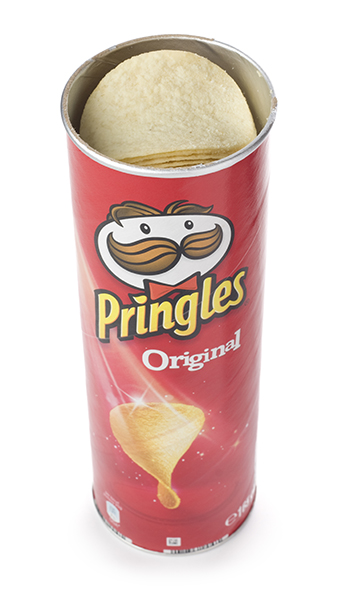9 Certainty and uncertainty
The importance of certainty and uncertainty for lawyers
Watch the following video, which introduces some aspects of certainty and uncertainty, both important concepts for a lawyer.

Transcript: Video 6 Certainty and uncertainty
After watching the video introducing the idea of uncertainty and how courts grapple with it, you will have a chance to grapple with a challenging case yourself in the next activity.
Activity 7 Is it a crisp?
In this activity, you get to decide a similarly uncertain rule as in the Jaffa Cake case discussed in the previous video. This is whether Pringles should be treated like crisps or not. Generally VAT does not have to be paid on food, but crisps are an exception. When the issue first arose, schedule 8 of the the VAT Act 1994Footnote 10 said that the following would incur VAT:
Any of the following when packaged for human consumption without further preparation, namely, potato crisps, potato sticks, potato puffs and similar products made from the potato, or from potato flour, or from potato starch, and savoury products obtained by the swelling of cereals or cereal products; and salted or roasted nuts other than nuts in shell.
The decision made a difference of around £20m in taxes per year!
You may be relatively familiar with the snack known as Pringles, but if you are not, the facts as found by the VAT tribunal were that Pringles:
- Were made from potato flour, corn flour, wheat starch and rice flour together with fat and emulsifier, salt and seasoning.
- Were manufactured by mixing the dry ingredients into dough with water and emulsifier, cutting shapes out of a dough sheet, frying it for a few seconds, adding oil and salt, cooling and then adding flavours.
- The manufacturing process caused oil to go into the spaces throughout the texture of the product replacing the water content removed during the frying. This gave the ‘mouth-melt’ feel when eaten. For potato crisps most of the fat stays on the surface.
- Had a regular shape in the form of a saddle, which aids stacking them enabling high production speeds. They were a uniform pale-yellow colour, which is paler than a potato crisp. They had a crisp texture.
- Had an amount of potato flour of around 40%.
In the text box below, write a passage imagining you are a judge applying the provision of the VAT Act 1994 above to these facts. When you have done this, vote in the poll below. Once you make your choice you will be able to see what others thought.
Comment
This was the issue for the Court of Appeal in the case of Proctor & Gamble v HM Revenue & Customs.Footnote 11 The judges in the various courts struggled with the question! The VAT Tribunal judge (see Proctor & Gamble UKFootnote 12) first ruled that they were crisps, but at the first appeal to the High Court, the judge thought that they were not crisps (see Proctor & Gamble UK Footnote 13). Eventually the case was appealed further to the Court of Appeal which then decided that Pringles were crisps.
Footnotes
- 10 VAT Act 1994 c.24.Back to main text
- 11 Proctor & Gamble v HM Revenue & Customs [2009] EWCA Civ 407, [2009] BVC 461.Back to main text
- 12 Proctor & Gamble UK [2004] BVC 4,038.Back to main text
- 13 Proctor & Gamble UK [2007] BVC 4,107.Back to main text

